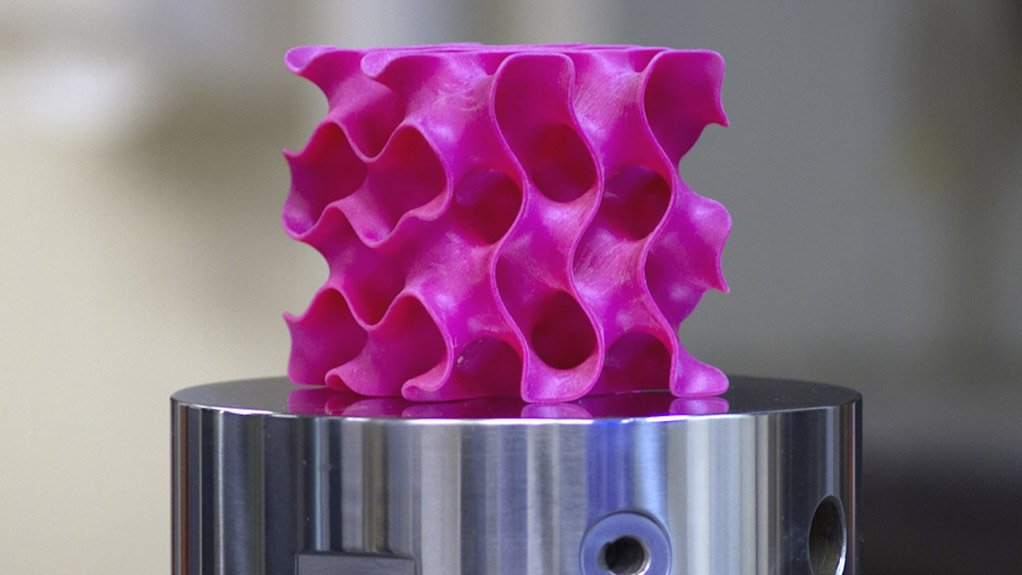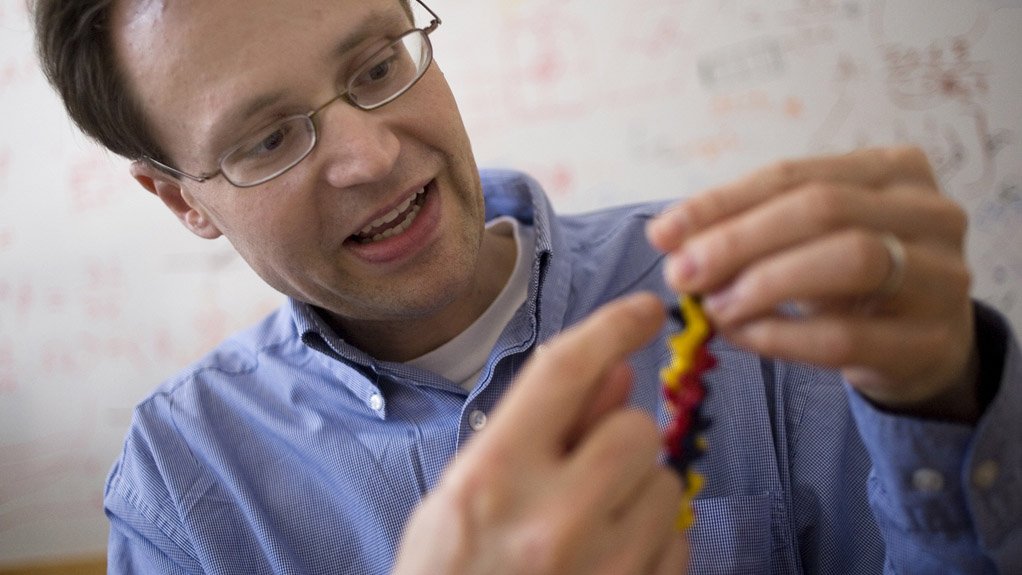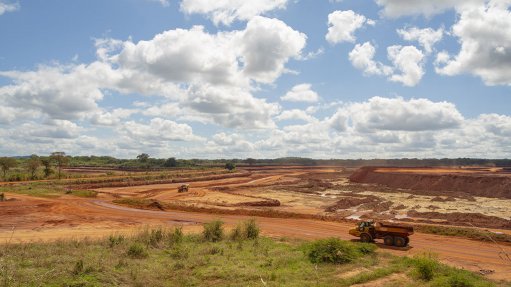Ten-times-stronger-than-steel lightweight graphene material developed



GRAPHENE INGENUITY Three-dimensional printed gyroid models were used to test the strength and mechanical properties of the new lightweight graphene material
Photo by MIT
MARKUS BUEHLER Owing to the shape being riddled with very tiny pore spaces, the material might find application in some filtration systems, for either water or chemical processing
Photo by MIT
Researchers at the Massachusetts Institute of Technology (MIT), in the US, have designed one of the “strongest lightweight materials” ever known by compressing and fusing flakes of graphene into a two-dimensional (2D) form of carbon.
The researchers describe the new material, as a spongelike configuration with a density of about 5%, which can have a strength ten times that of steel. MIT states that in its 2D form, graphene is thought to be the strongest of all known materials.
MIT notes that, until recently, scientists have had difficulties in translating that 2D strength into useful three-dimensional (3D) materials.
The researchers from the private research university in Cambridge, Massachusetts, however, highlight that these new findings indicate that the “crucial” aspect of the new 3D forms has more to do with their unusual geometrical configuration than with the material itself, which suggests that similar, strong, lightweight materials could be made from a variety of materials by creating similar geometric features.
The findings were recently reported in the journal Science Advances in a joint paper by MIT Department of Civil and Environmental Engineering (CEE) head Markus Buehler, CEE research scientist Zhao Qin and CEE graduate students Gang Seob Jung and Min Jeong Kang (MEng).
MIT notes that other groups have suggested the possibility of such lightweight structures, but lab experiments so far have failed to match predictions, with some results exhibiting several orders of magnitude less strength than expected.
“Our team decided to solve the mystery by analysing the material’s behaviour down to the level of individual atoms within the structure. The team was therefore able to produce a mathematical framework that very closely matches experimental observations,” states Buehler.
He elaborates that the 2D materials are basically flat sheets of one atom in thickness, but which can be “indefinitely large” in the other dimensions and possess exceptional strength and unique electrical properties. However, Buehler points out that, because of their “extraordinary thinness”, they are not very useful for making 3D materials that could be used in vehicles, buildings or devices.
“What we have done is to realise the wish of translating these 2D materials into 3D structures.” He comments that the team was able to compress small flakes of graphene using a combination of heat and pressure.
Buehler expounds that this process produced a strong, stable structure whose form resembles that of some corals and microscopic creatures called diatoms. These shapes, which have an “enormous surface area” in proportion to their volume, proved to be “remarkably strong”.
“Once we created these 3D structures, we wanted to see what its limit was. To do that, the team created a variety of 3D models and then subjected them to various tests,” says Qin.
He notes that one of the samples had 5% the density of steel, but possessed ten times its strength.
Further, Buehler says that what happens to their 3D graphene material, which is composed of curved surfaces under deformation, resembles what would happen with sheets of paper.
He notes that paper has little strength along its length and width and can be easily crumpled up. However, Buehler points out that when made into certain shapes, for example rolled into a tube, suddenly the strength along the length of the tube is much greater and can support “substantial weight”.
He says that, similarly, the geometric arrangement of the graphene flakes after treatment naturally forms a very strong configuration. The new configurations have been made in the lab using a high-resolution, multimaterial 3D printer.
Buehler comments that the new configurations were mechanically tested for their tensile and compressive properties and their mechanical response under loading was simulated using the team’s theoretical models. “The results from the experiments and simulations matched accurately,” he highlights.
Moreover, Buehler notes that the new, more accurate results, based on atomistic computational modelling by the MIT team, ruled out a possibility proposed previously by other teams, which was that it might be possible to make 3D graphene structures so lightweight that they would actually be lighter than air and could be used as a durable replacement for helium in balloons.
He remarks that the current work shows, however, that, at such low densities, the material would not have sufficient strength and would collapse from the surrounding air pressure.
Nonetheless, he stresses that many other possible applications of the material could eventually be feasible for uses that require a combination of extreme strength and light weight.
“One could either use the real graphene material or use the geometry we discovered with other materials – like polymers or metals – to gain similar advantages of strength combined with advantages in cost, processing methods, or other material properties, such as transparency or electrical conductivity.”
Buehler states that one can replace the material itself with anything as the geometry is the dominant factor. “It is something that has the potential to transfer to many things,” he states.
Buehler comments that the “unusual” geometric shapes that graphene naturally forms under heat and pressure look something like a Nerf sports bash ball, which is round and has many holes.
He says that these shapes, known as gyroids, are so complex that “actually making them using conventional manufacturing methodsis probably impossible”. The team used 3D-printed models of the structure, enlarged thousands of times their natural size for testing purposes.
For actual synthesis, the researchers say that one possibility is to use the polymer or metal particles as templates, coat them with graphene by chemical vapour deposition before heat and pressure treatments, and then chemically or physically remove the polymer or metal phases to leave 3D graphene in the gyroid form.
Comments
Press Office
Announcements
What's On
Subscribe to improve your user experience...
Option 1 (equivalent of R125 a month):
Receive a weekly copy of Creamer Media's Engineering News & Mining Weekly magazine
(print copy for those in South Africa and e-magazine for those outside of South Africa)
Receive daily email newsletters
Access to full search results
Access archive of magazine back copies
Access to Projects in Progress
Access to ONE Research Report of your choice in PDF format
Option 2 (equivalent of R375 a month):
All benefits from Option 1
PLUS
Access to Creamer Media's Research Channel Africa for ALL Research Reports, in PDF format, on various industrial and mining sectors
including Electricity; Water; Energy Transition; Hydrogen; Roads, Rail and Ports; Coal; Gold; Platinum; Battery Metals; etc.
Already a subscriber?
Forgotten your password?
Receive weekly copy of Creamer Media's Engineering News & Mining Weekly magazine (print copy for those in South Africa and e-magazine for those outside of South Africa)
➕
Recieve daily email newsletters
➕
Access to full search results
➕
Access archive of magazine back copies
➕
Access to Projects in Progress
➕
Access to ONE Research Report of your choice in PDF format
RESEARCH CHANNEL AFRICA
R4500 (equivalent of R375 a month)
SUBSCRIBEAll benefits from Option 1
➕
Access to Creamer Media's Research Channel Africa for ALL Research Reports on various industrial and mining sectors, in PDF format, including on:
Electricity
➕
Water
➕
Energy Transition
➕
Hydrogen
➕
Roads, Rail and Ports
➕
Coal
➕
Gold
➕
Platinum
➕
Battery Metals
➕
etc.
Receive all benefits from Option 1 or Option 2 delivered to numerous people at your company
➕
Multiple User names and Passwords for simultaneous log-ins
➕
Intranet integration access to all in your organisation




















